Traveling by train in France
Traveling by train in France is convenient, quick, safe, and relaxing. Most European countries have an extensive train network and France is no exception.
We have traveled to France from another country via rail, traveled from one major city to another city halfway across France, and taken short train rides for day trips. Each trip was easy and far better than driving.
Passengers board a SNCF TGV train in Marsaille.
What are trains like in France?
Basically, there are three types of trains in France: long-distance high-speed, long-distance, and local trains.
A TGV train's first class car. Typically there are two seats on one side and one on the other in first class.
Trains à Grande Vitesse (TGV)
TGVs are SNCF's (France’s national train operator) premier high-speed trains. These trains will make you a believer in train travel. These trains are labeled “inOui”.
The seats are large with lots of legroom and very large trays for food or laptops.
There is free wifi (we found the wifi to be acceptable but not great) and bathrooms.
A large cafe car is available on nearly all TGV trains. You can bring the food back to your seat or stand at the ample tables in the car.
All the TGV seats are reserved so you know exactly where you will be sitting. The cars have large numbers on the outside so it’s easy to find your car.
There are two classes of service: First Class and Second Class
First-class seats are larger and more comfortable with power at each seat. They are usually arranged with two seats on one side of the aisle and one seat on the other.
Second class generally has two seats on each side.
Since there are fewer people in each first-class car there is more room for your luggage in the racks at the end (and sometimes middle) of the car.
If you book early you may find the difference between the classes to be minimal. If so, I’d absolutely book first-class.
With that said second class is a fantastic, comfortable, and relaxing ride. Abundant legroom and the ability to get up and walk around are big advantages over traveling by air.
Ouigo
A French Ouigo train in Marseille
Ouigo is a low-cost, no-frills version of the TGV. We have not personally used them since for every trip we were able to book far ahead and receive very reasonable fares on the regular TGV trains. But of course, having a low-cost option will always help to keep everyone’s fares lower.
Ouigo trains are all second-class seating and ticketing is all digital.
It can be a great option for the price.
Our favorite travel resources
Hotels - Booking.com. Lots of search options and information. Link
Activities - Viator. We love food tours and historical guides from Viator. Link
Airfare - FareDrop. Custom notifications of airfare sales. Link
Phone connection - Airalo. E-Sim for your phone, it’s easy and available for every country. Link
Europe train travel - Trainline - We use it to book all our train reservations. Link
Note - This blog post contains affiliate links. This means that if we recommend a product, activity, or hotel, we might receive a small commission if you buy or book from these links. This is done at no additional cost to you. We only recommend products we have personally used or have thoroughly researched.
Intercités
A woman boards an Intercites train in Arles.
Intercités are SNCF's non-high-speed long-distance express trains. Some of these trains require reservations and some don’t.
Similar to TGV these trans all have ample luggage storage areas and restrooms. But they may or may not have a cafe car.
Trains Express Régionaux (TER)
These are the short-trip regional trains throughout France. The actual train cars come in all shapes and sizes but there are generally no reservations required.
These are similar to trains in the United States that might be used for commuters into a big city. They are comfortable and efficient but nowhere near the comfort or speed of the TGV trains.
Eurostar
If you are planning to travel to London, Amsterdam, Brussels, Cologne, or Rotterdam then Eurostar is a fast and easy way to go. Eurostar began rail service between London and Paris in 1994.
If you are traveling between Paris and London you’ll need to pass through airport-style security and passport control.
Eurostar trains standard, standard premier and business premier classes.
It’s best to book Eurostar tickets as soon as possible.
How to purchase French rail tickets
There are numerous ways to purchase French rail tickets: SNCF’s website, Trainline, Raileurope.com, and Omio.com are the major players. You can also purchase tickets at rail station kiosks
A group of SNCF ticket kiosks.
We absolutely recommend using Trainline to book rail tickets in Europe. Many of the other sites can be difficult to use but Trainline has always been flawless.
We are Trainline affiliates but we’ve been recommending them long before we became an affiliate.
Note - This blog post contains affiliate links. This means that if we recommend a product, activity, or hotel, we might receive a small commission if you buy or book from these links. This is done at no additional cost to you. We only recommend products we have personally used or have thoroughly researched.
Book your train via Trainline here.
On a recent trip to France, we decided to use the kiosk to purchase a ticket at the Marseille train station for a day trip to Arles.
While it wasn’t difficult we had peck on the keyboard to enter both my name and Debbie’s name and email addresses. Plus our last name has an apostrophe which always makes the process difficult.
After a couple of errors with the apostrophe, I took out my phone and opened up the Trainline app and since both our names are stored in my profile we had tickets in a few seconds.
Tips for traveling on French trains:
Keep your valuables in the bags at your seat. While theft of suitcases is not common on TGV trains, the luggage bins at each end make it easy for a thief to get off the train with your bag. I usually try to put my luggage in a bin in front of me so I can keep an eye on them.
Look for your train number and not your destination on the train board. The departure boards in large train stations can be huge so it’s easier to search for your train by the departure time and train number rather than the train’s ultimate destination.
Arrive early but not “airport early”. I’m a get-to-the-airport-early guy but since there are no security checkpoints you can get to the train station much closer to departure time. Just leave yourself time to check for the departure track and to pick up snacks.
Bring food on board. While there is a cafe car on many long-distance trains, especially TGVs, you are allowed to bring food and drinks on the trains. Large train stations have to-go options that are better and cheaper than the options on the train.
Tracks are posted late. Unlike your airport gate, your departure track will be posted just a short time before boarding. This leads to a bit of a crowded rush but don’t worry, especially if you have a reserved seat.
Self-service kiosks are in English. While we recommend buying your ticket through Trainline you may decide to use one of the self-service kiosks instead. Most machines will have flags indicating the available languages. Usually, they will have the flag of the United Kingdom for English.
We also have posts on traveling by train in England, Spain, and Italy
Enjoy your trip!
Some well-reviewed France tours:
Other France blog posts:
Pin to save this post
Hover over image until you see the red Pinterest icon appear in the corner of the image, then click on the icon to Pin to your own board. That’s it!




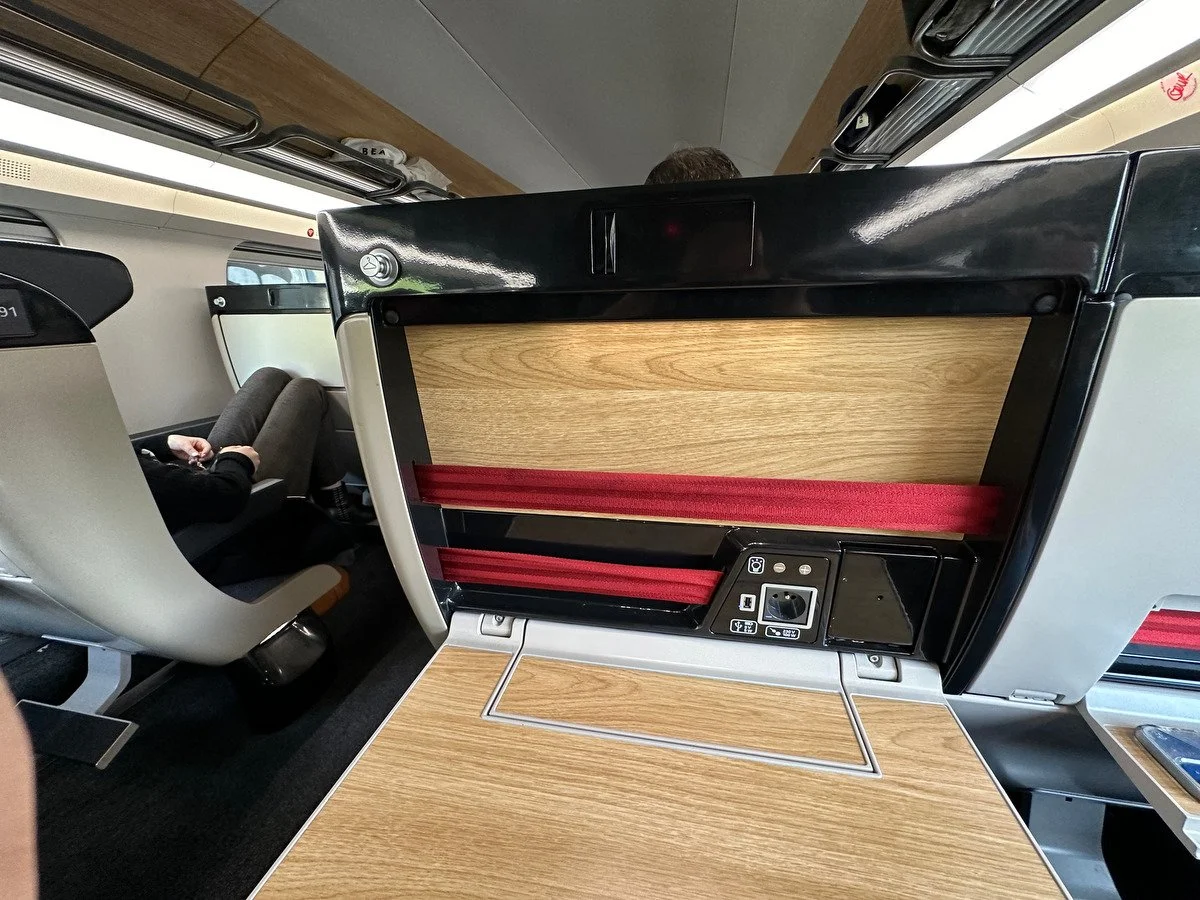

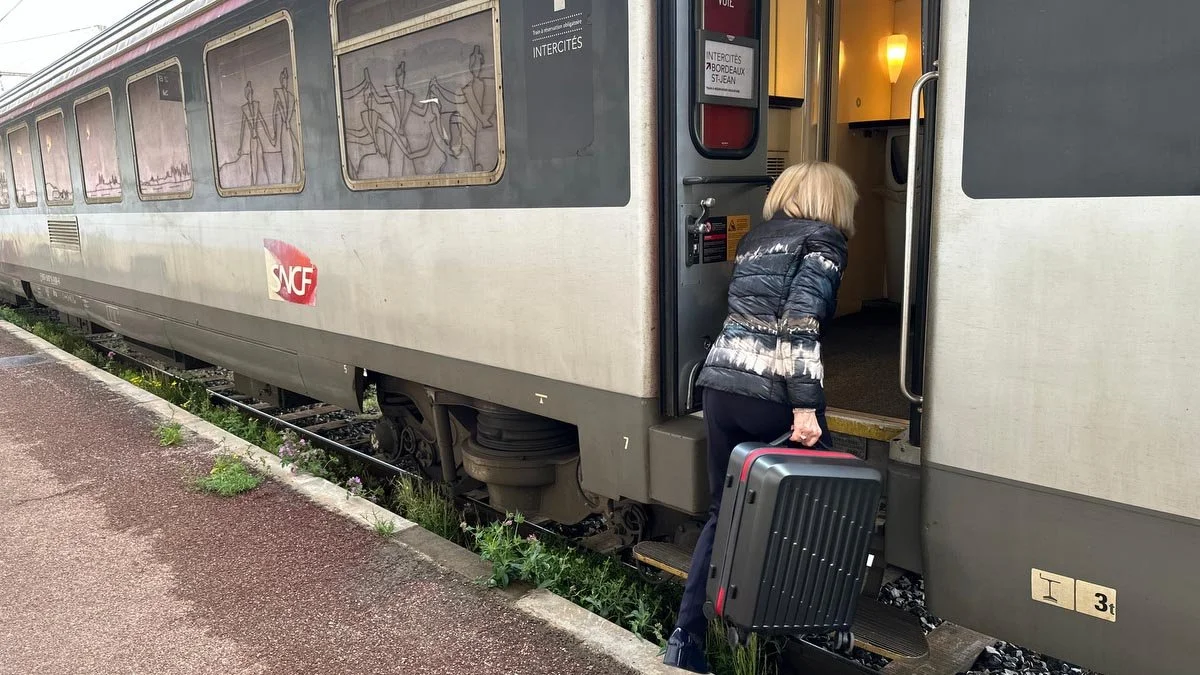
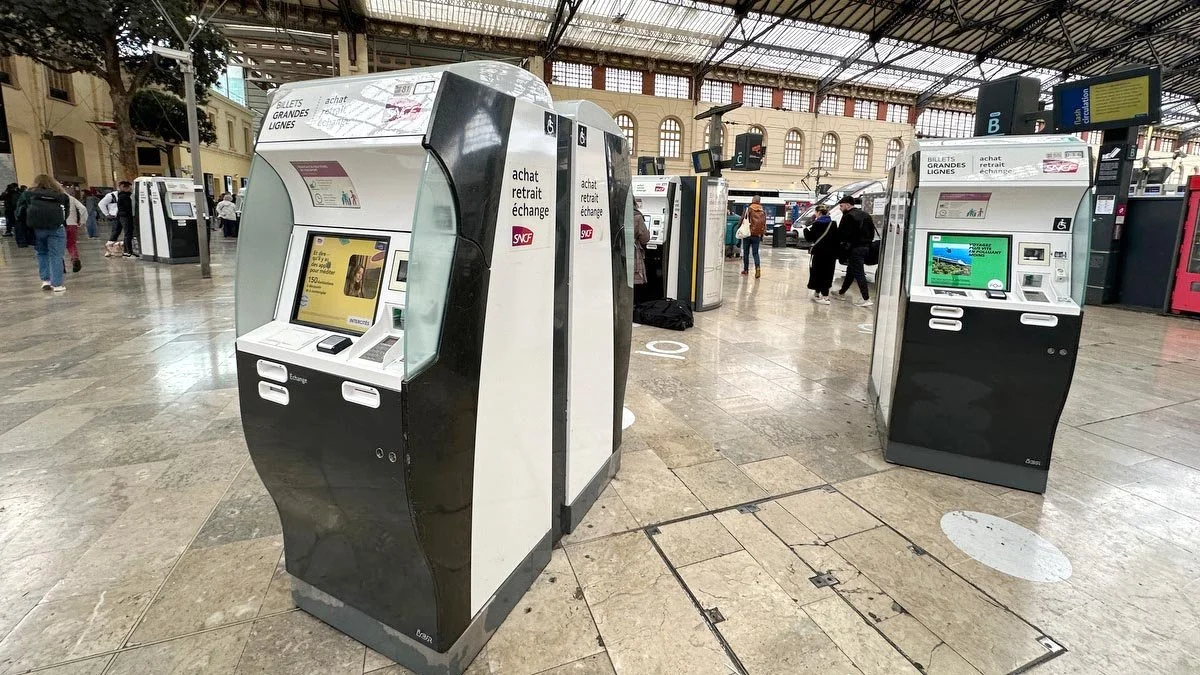
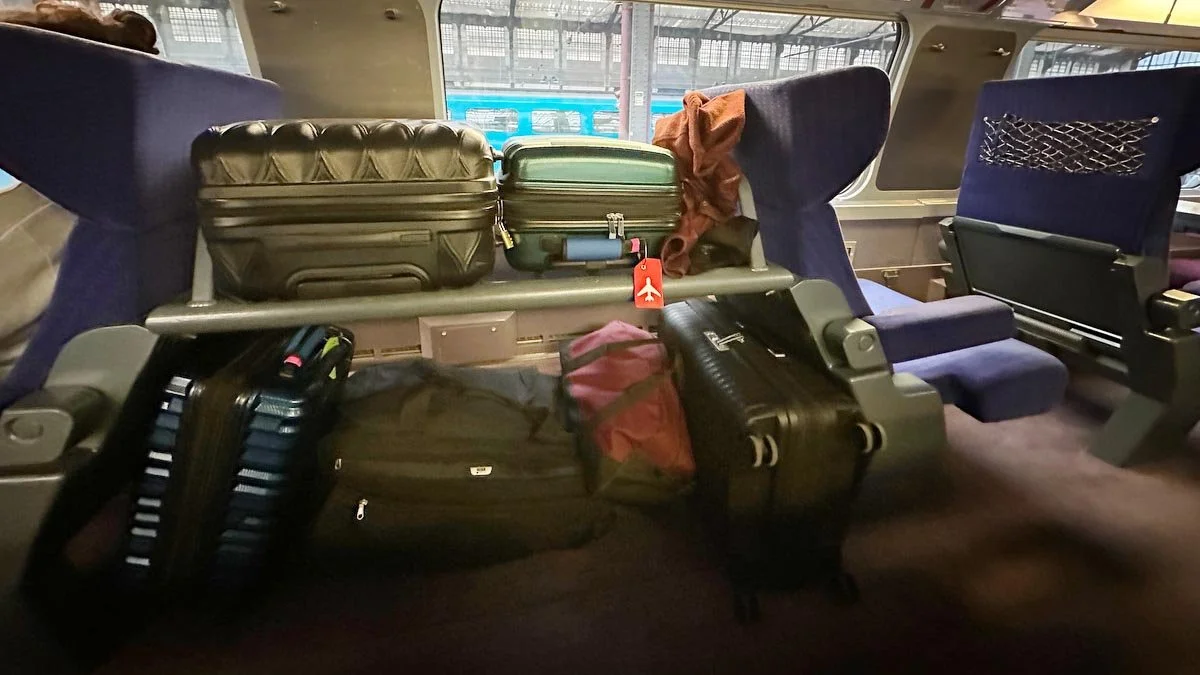
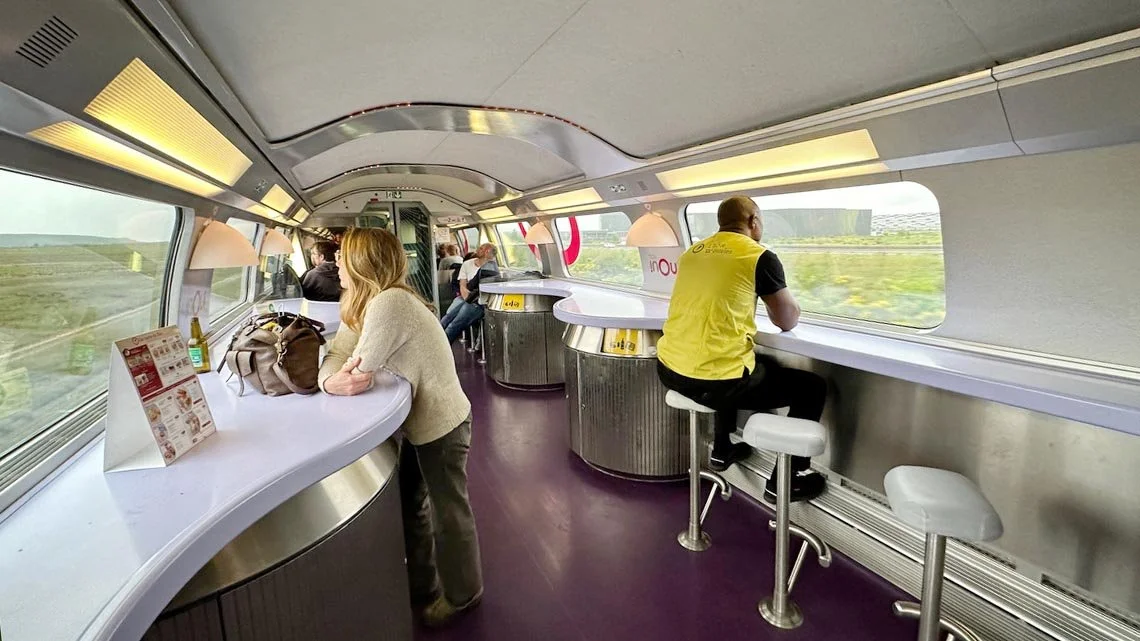
















We have found that the South of France is not only incredibly beautiful but also very easy to visit. Most of the towns along the French Riviera are connected by train and driving between them is easy too.